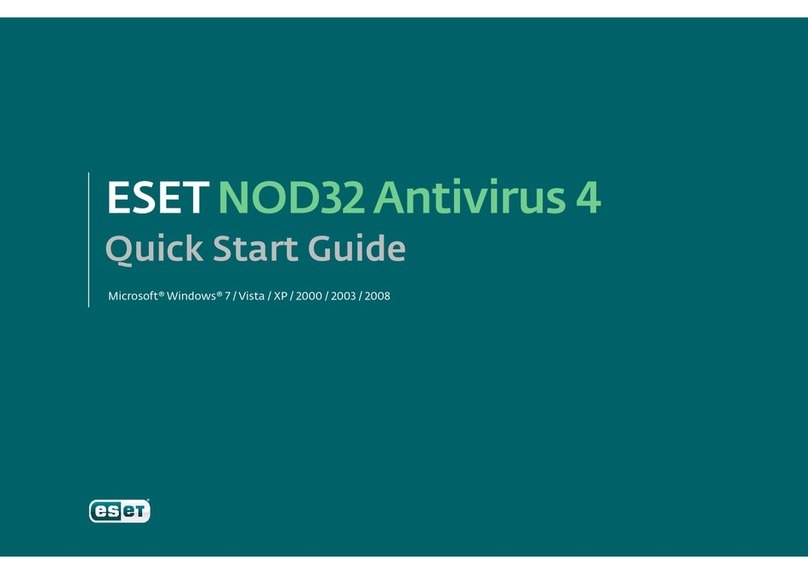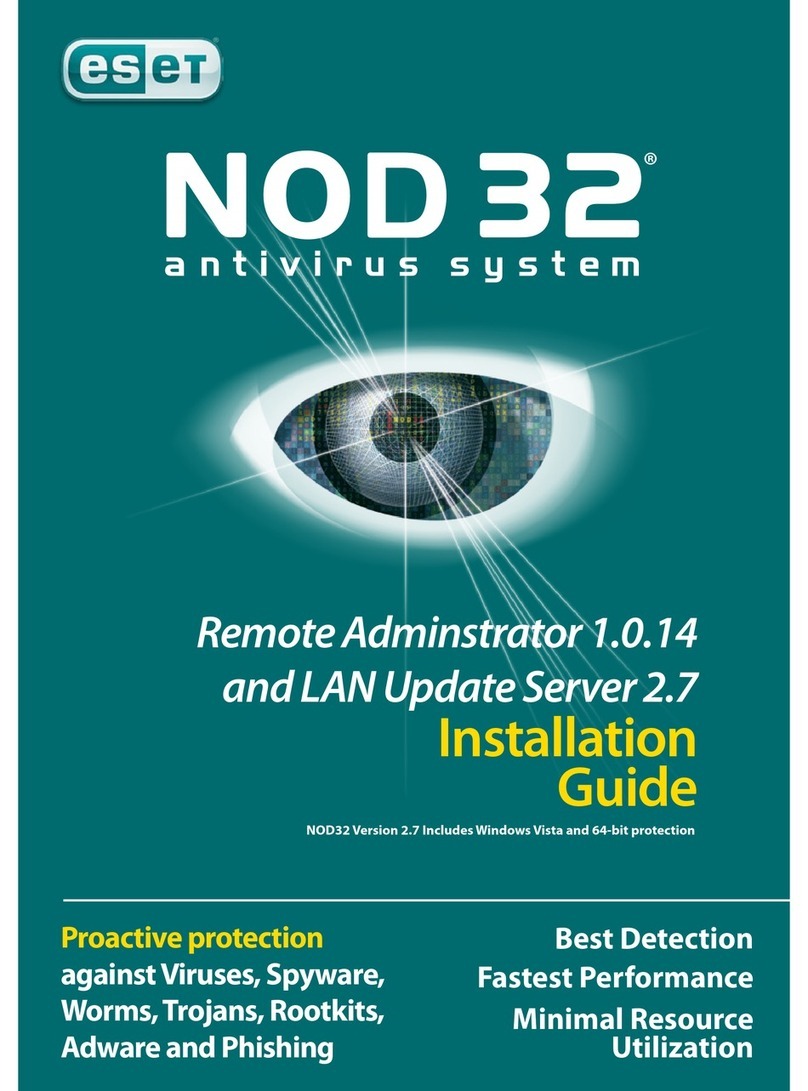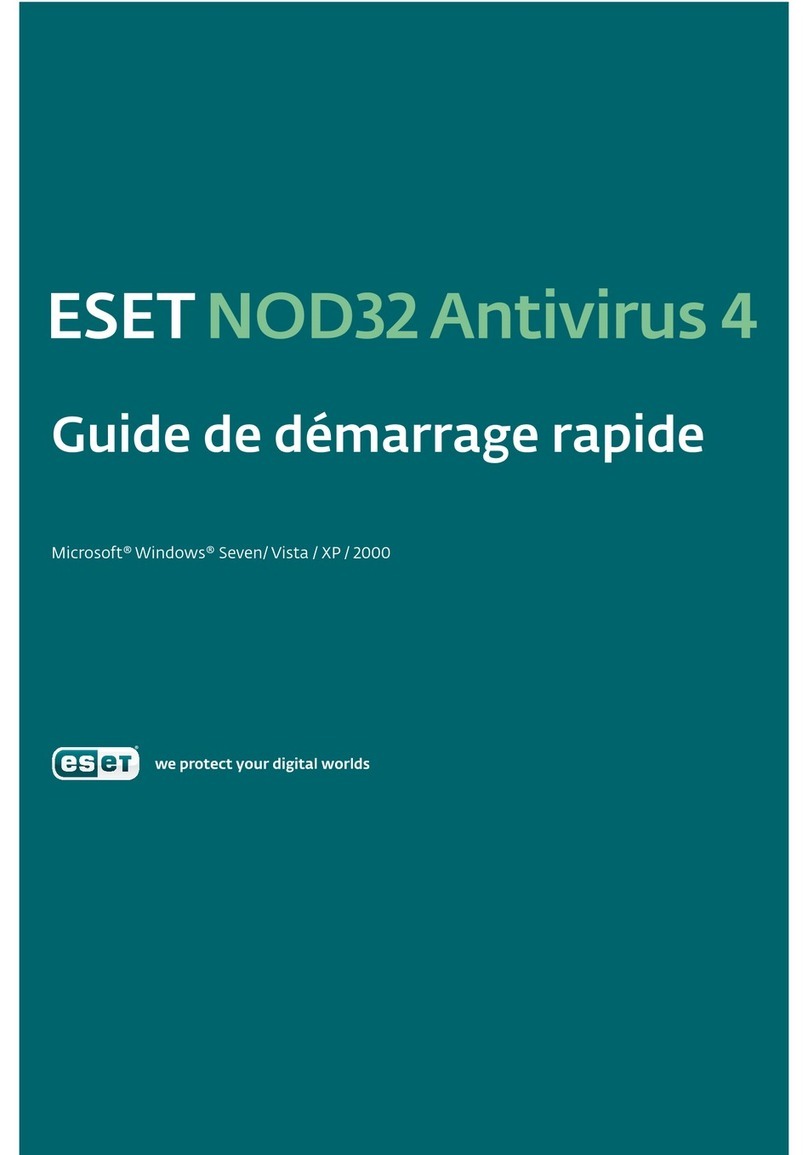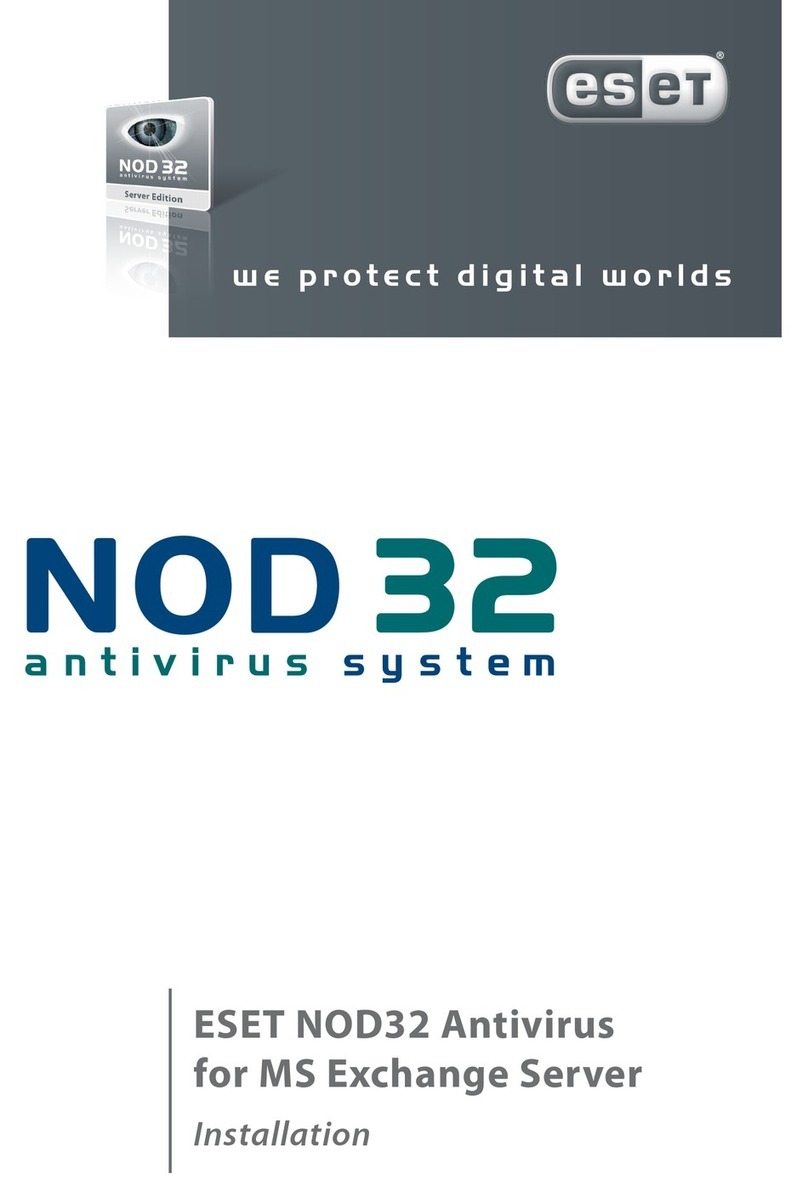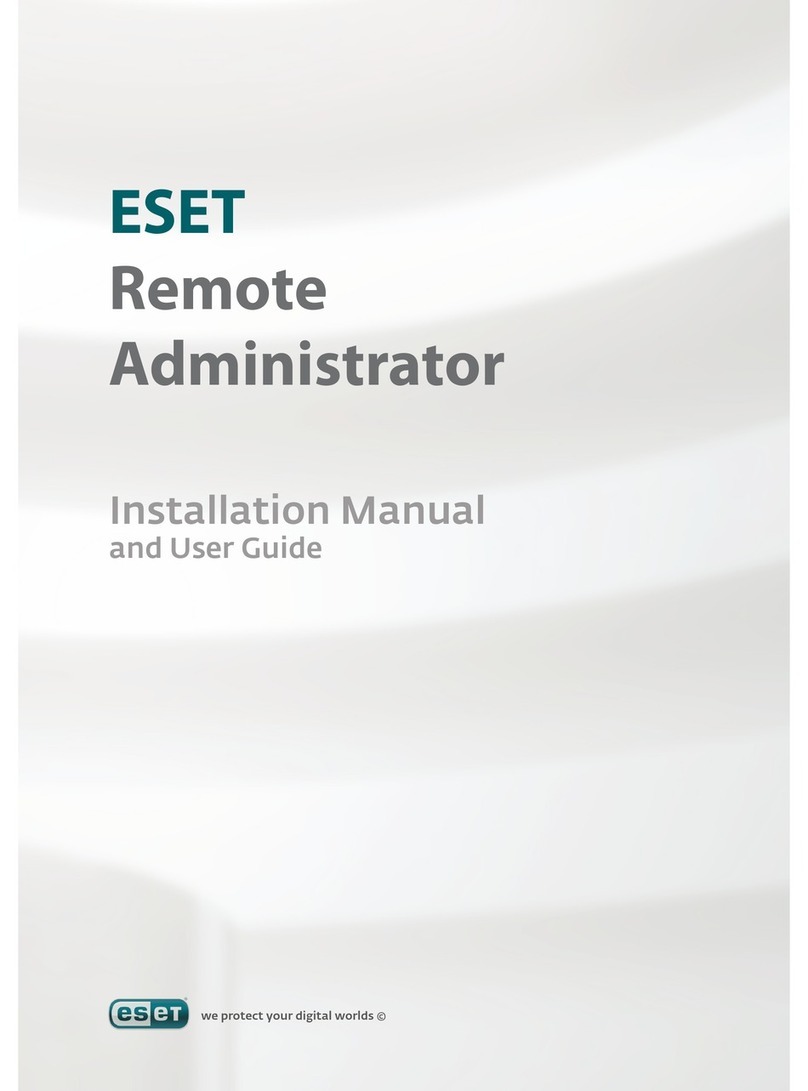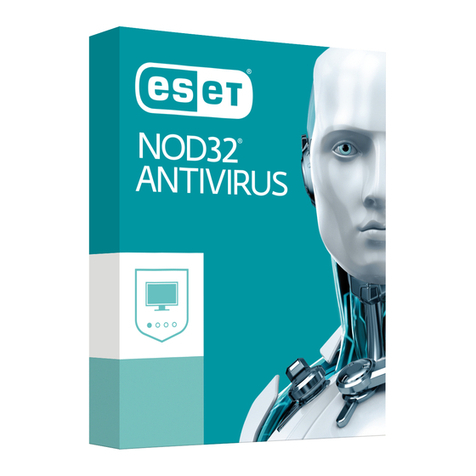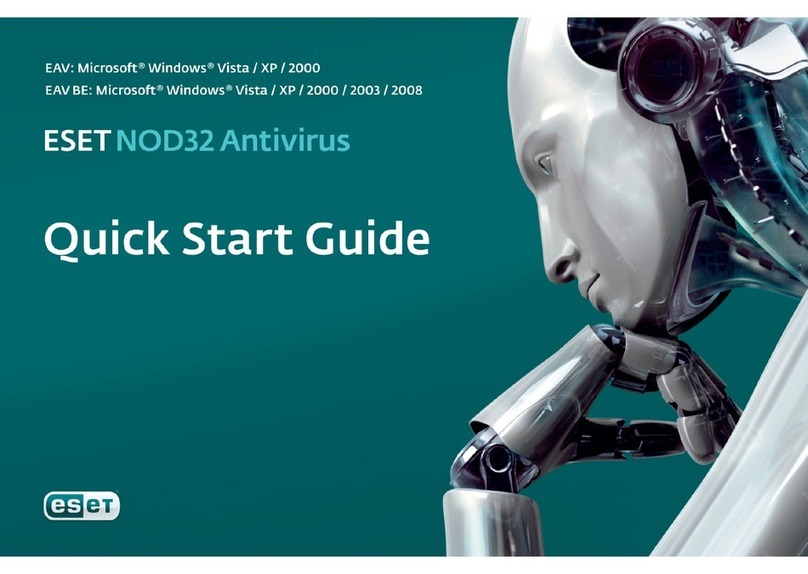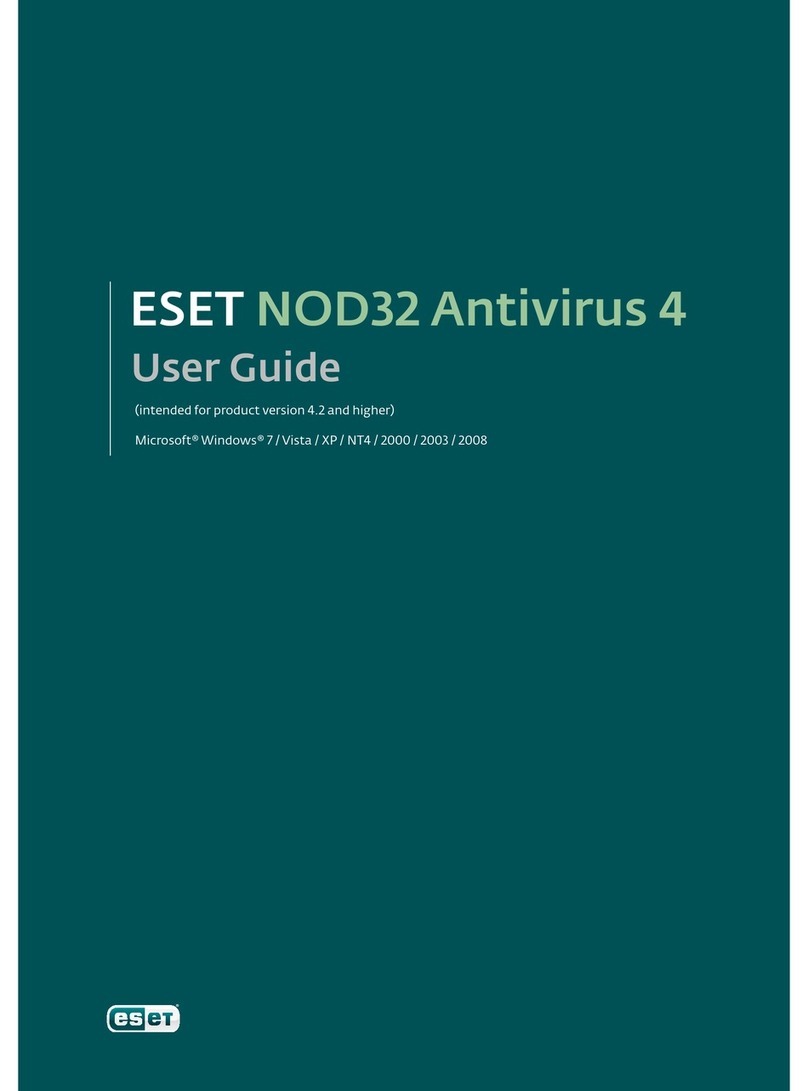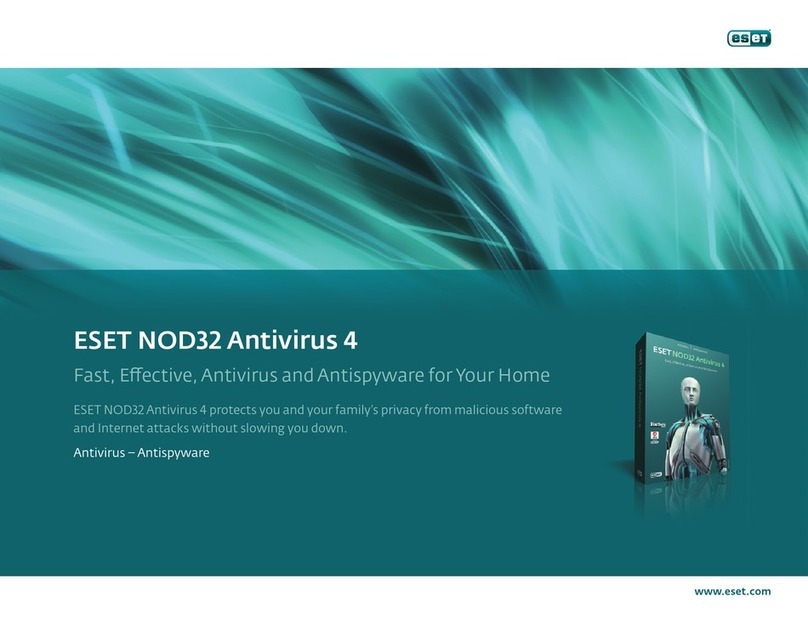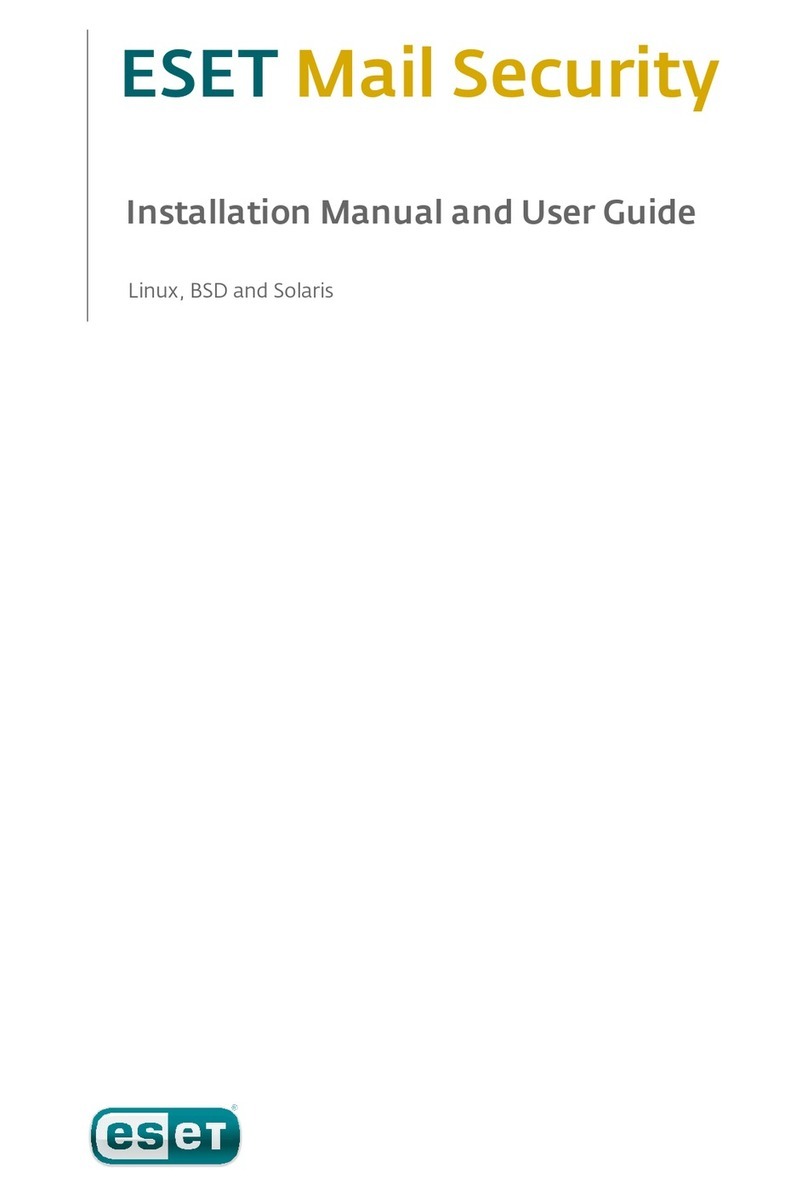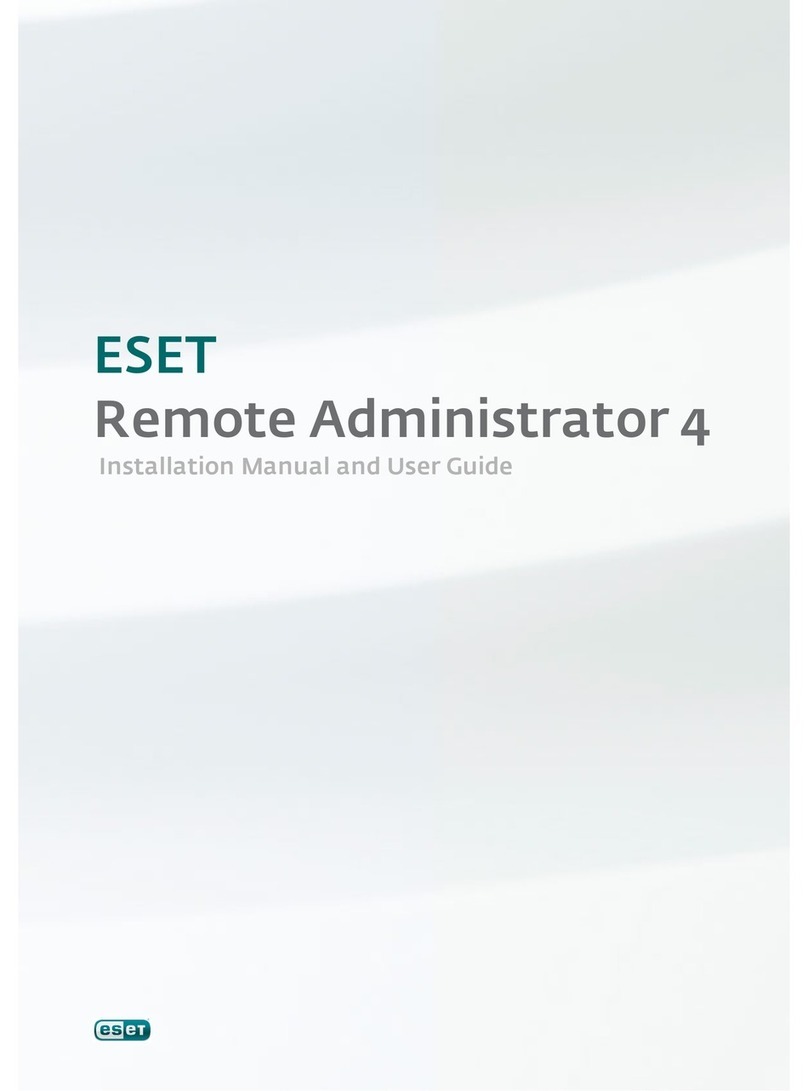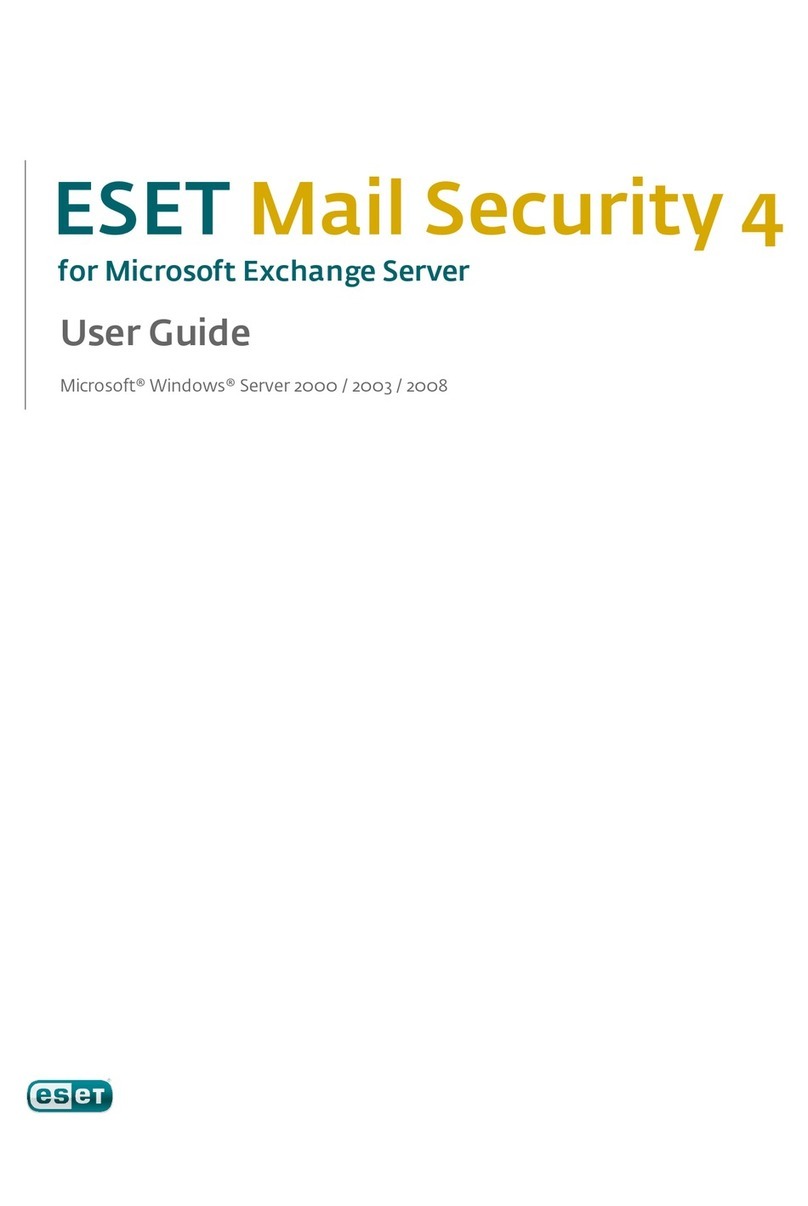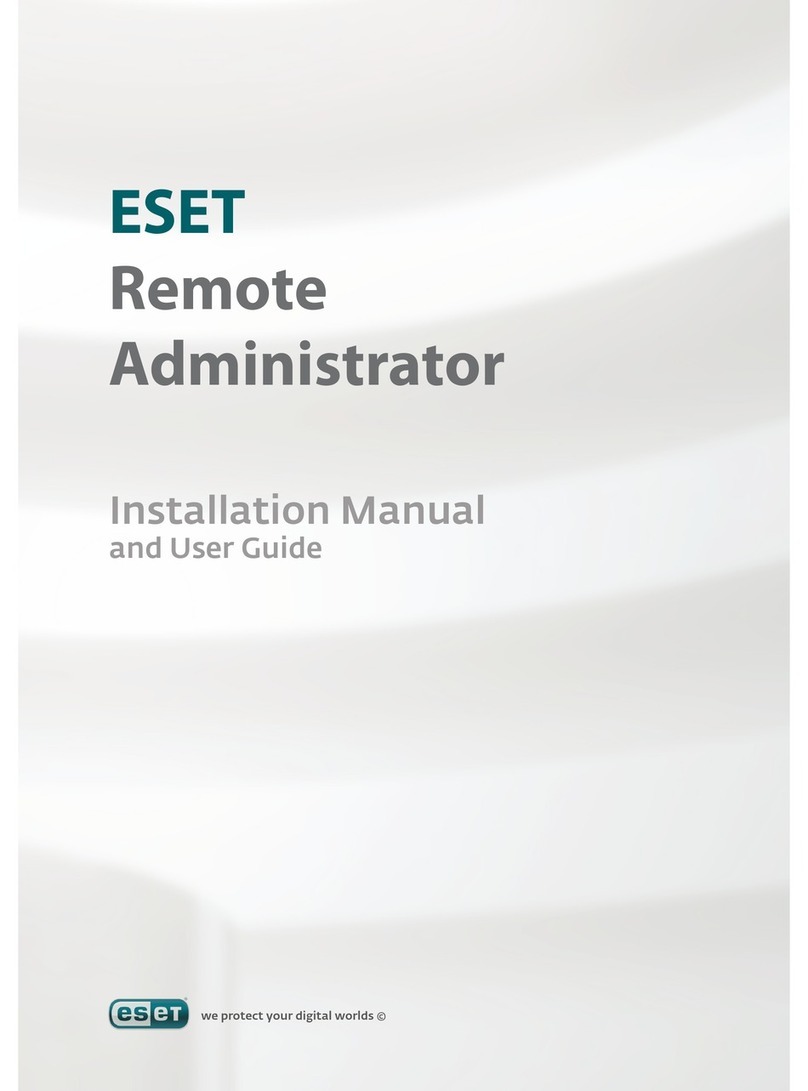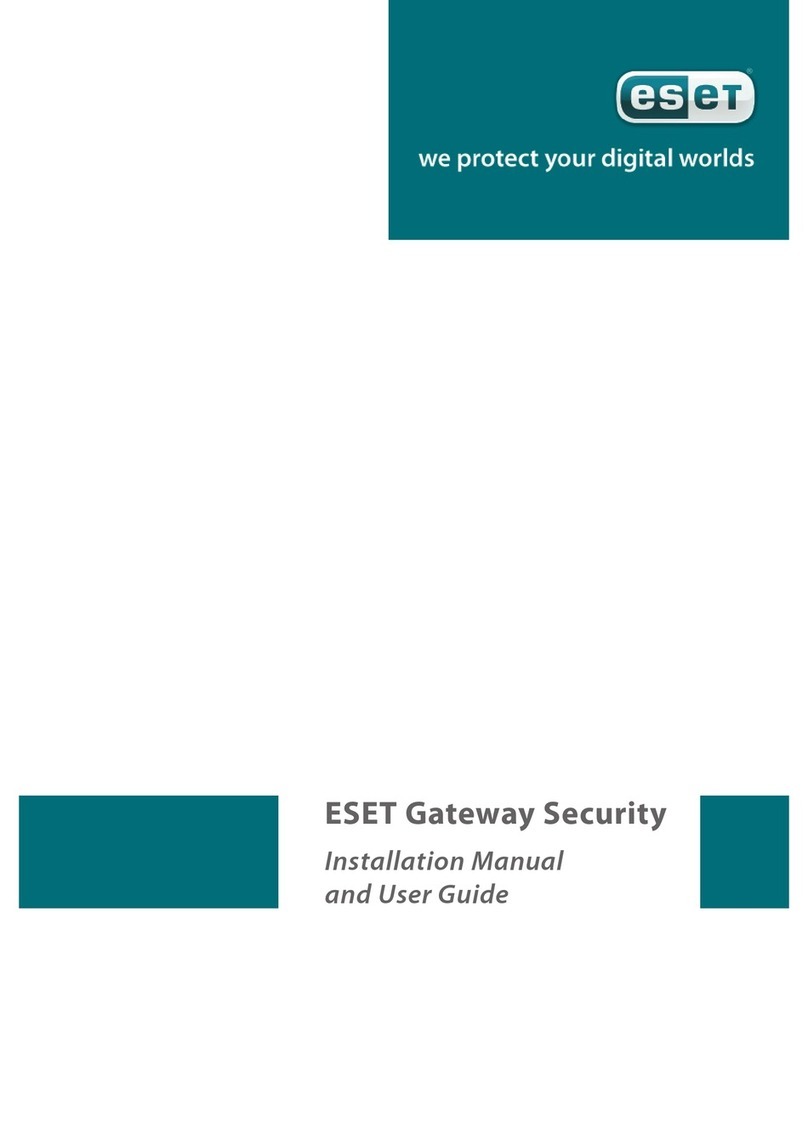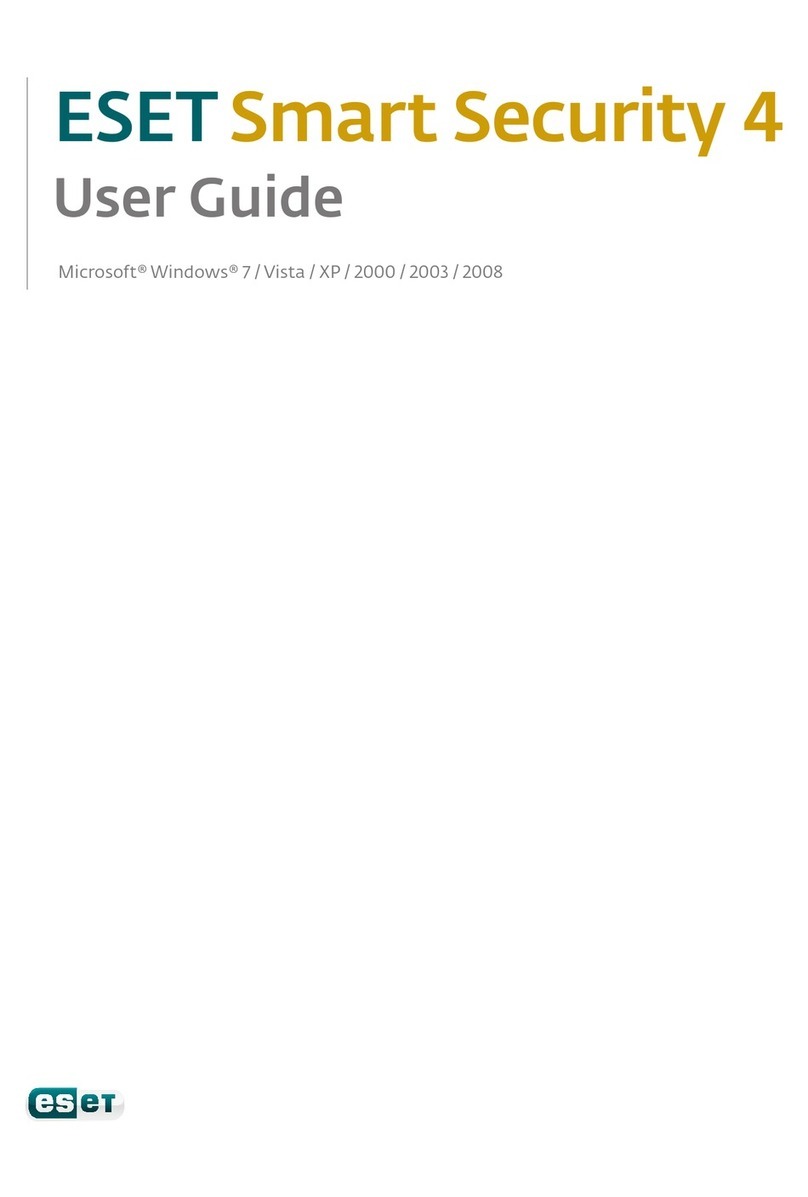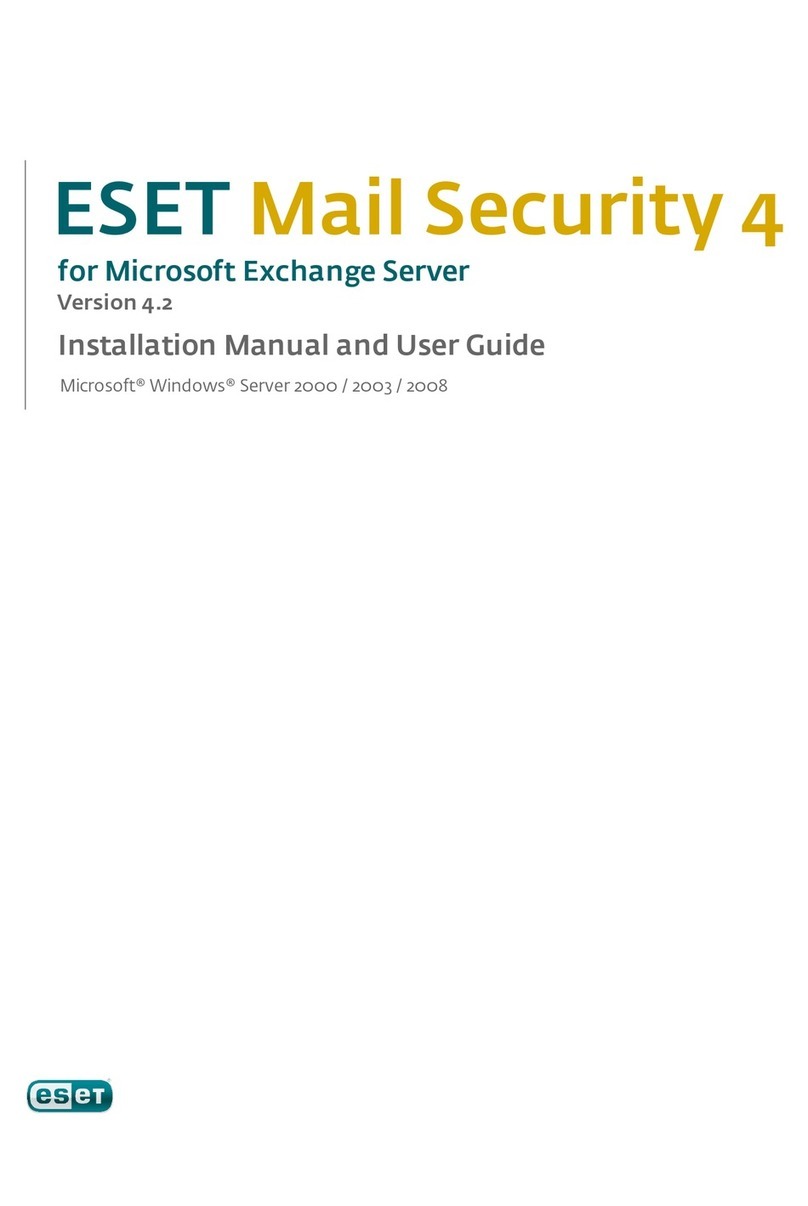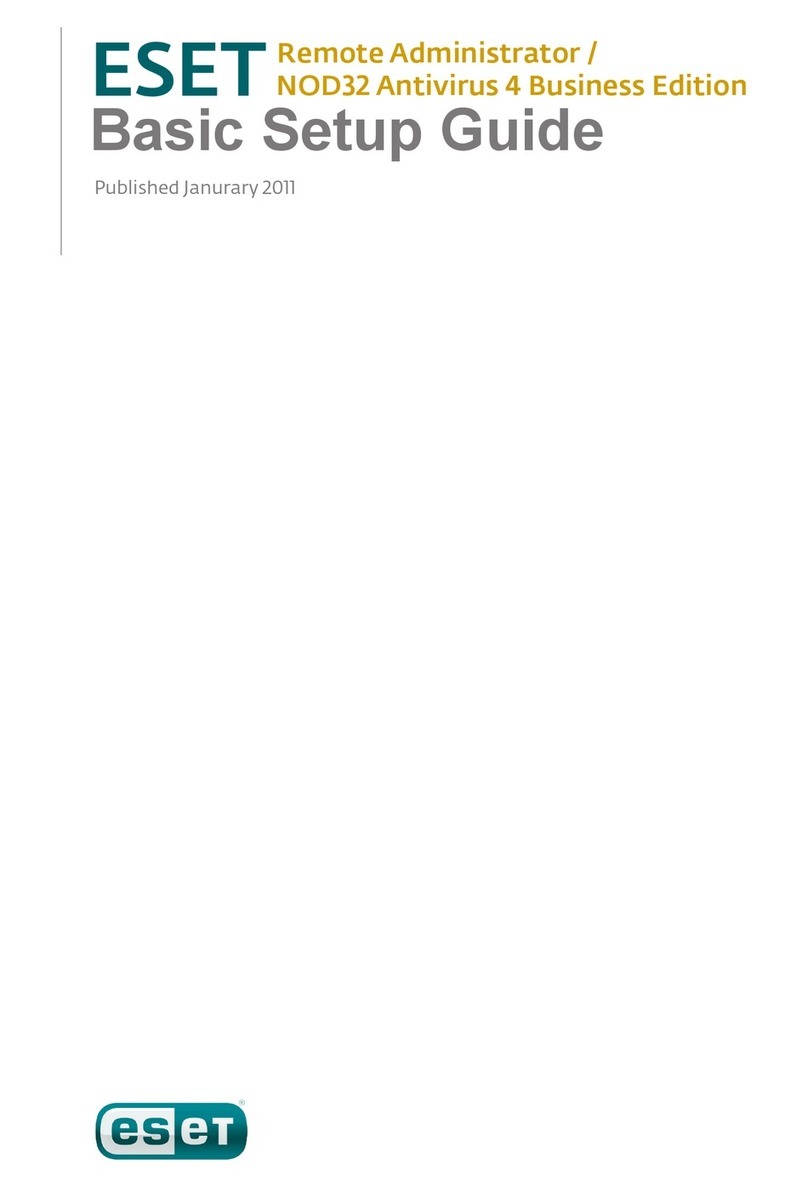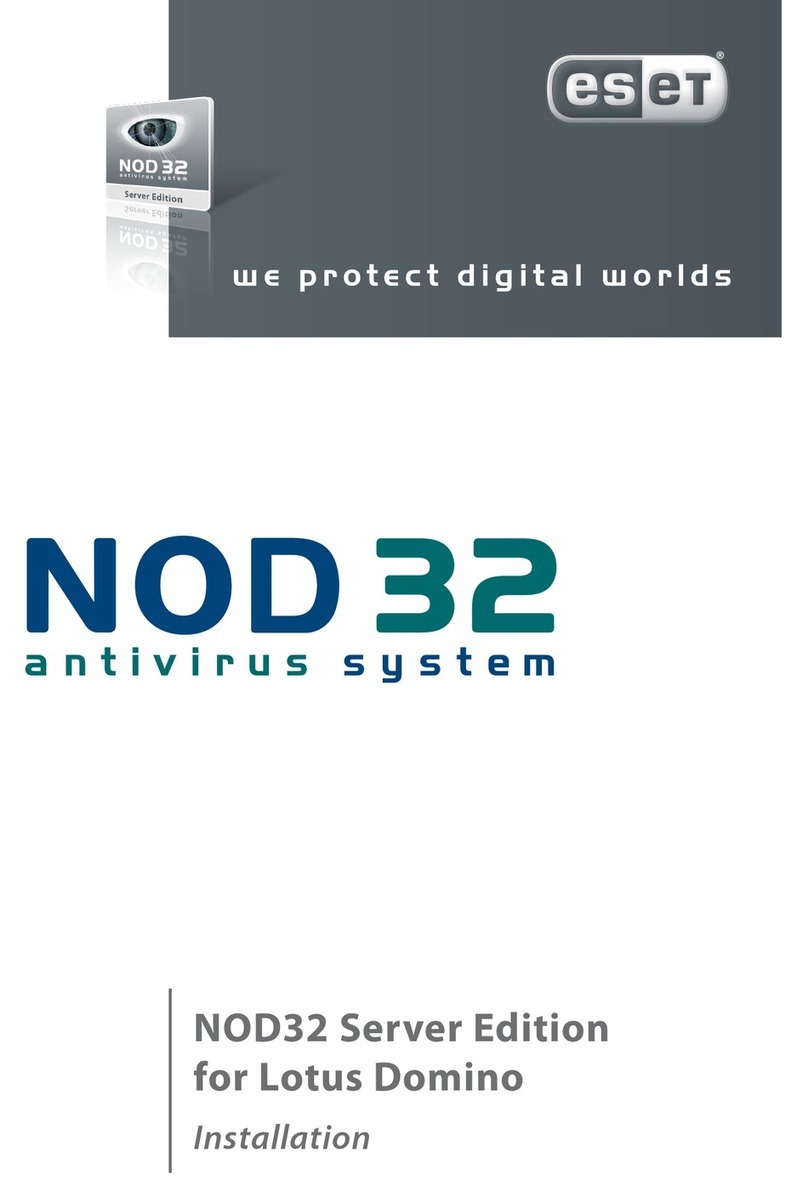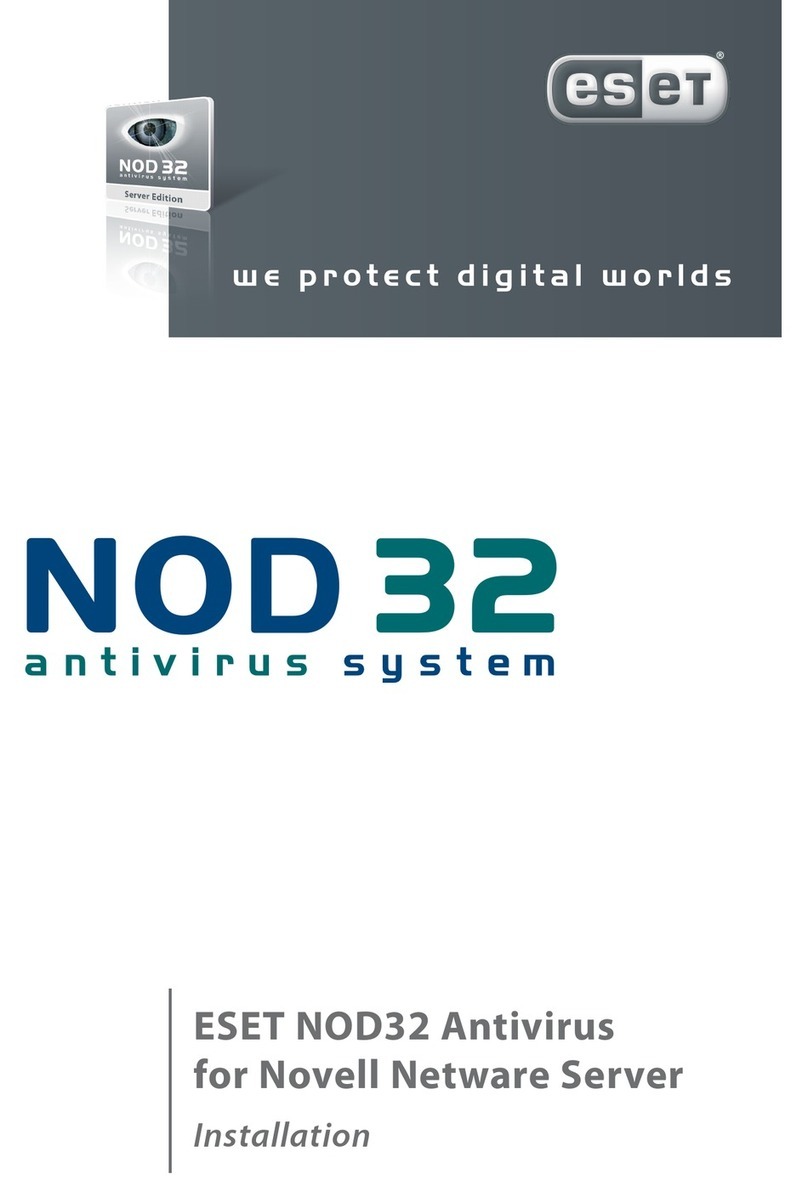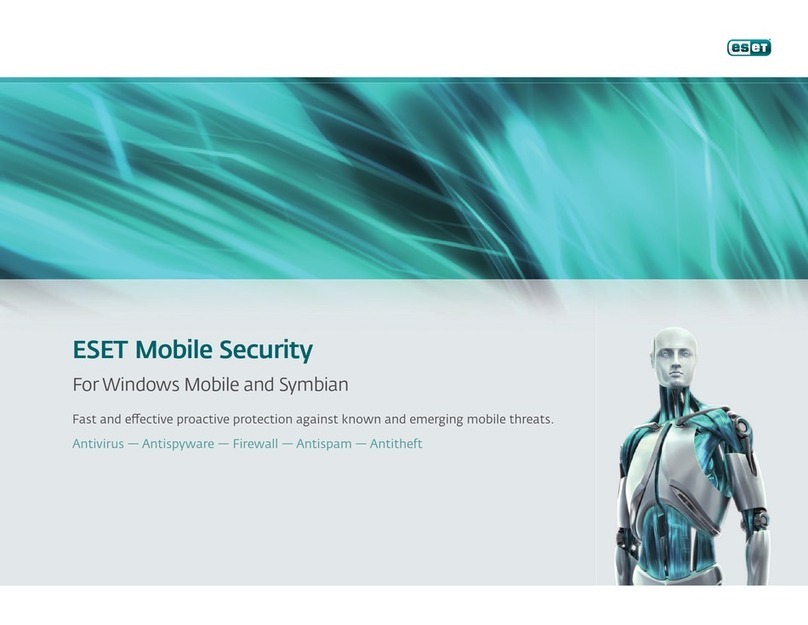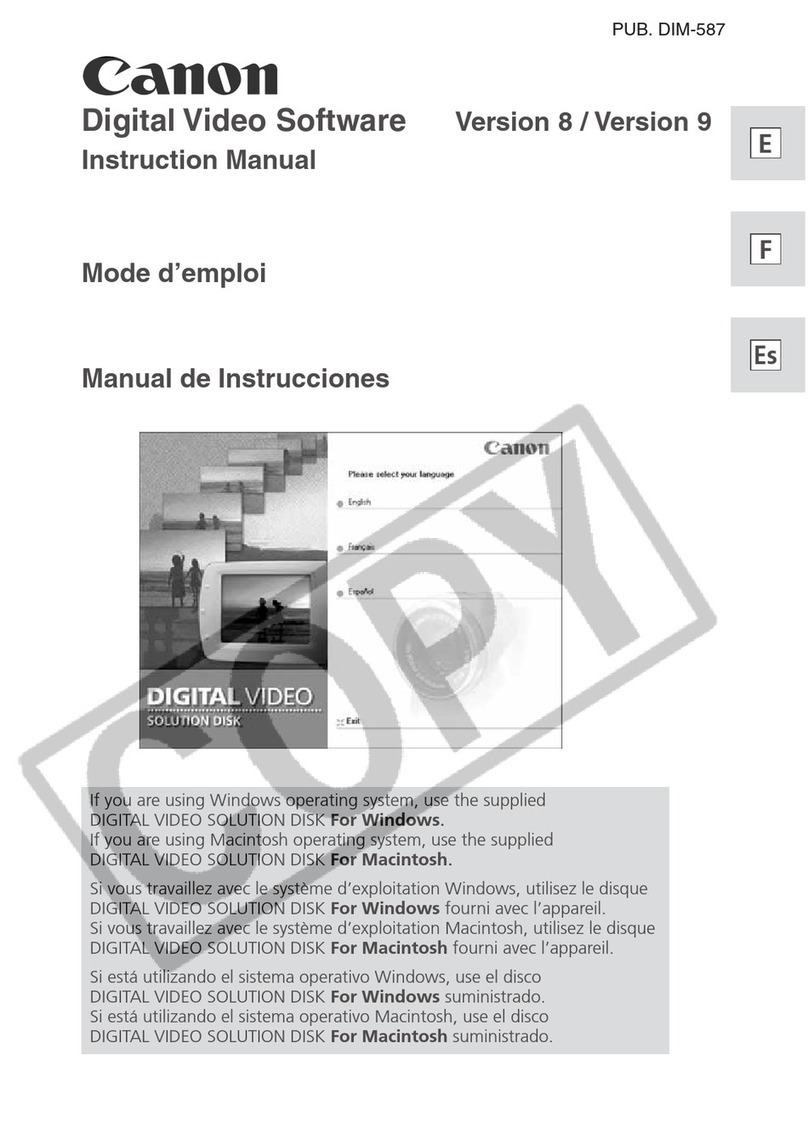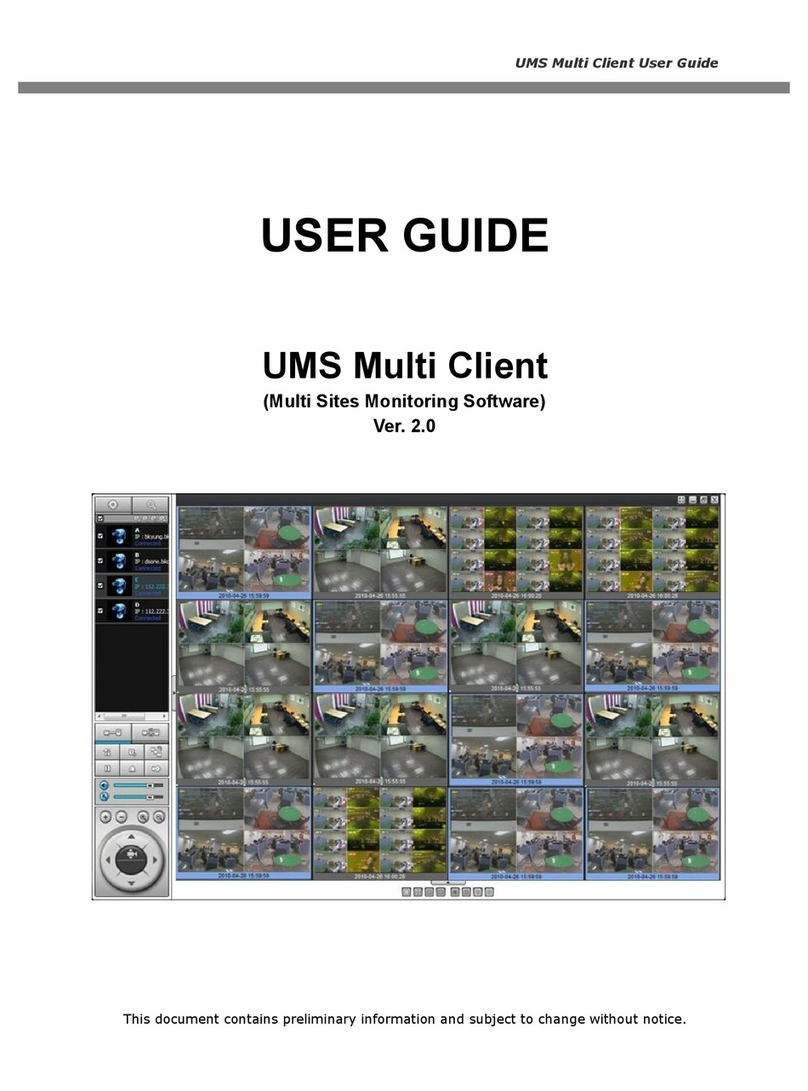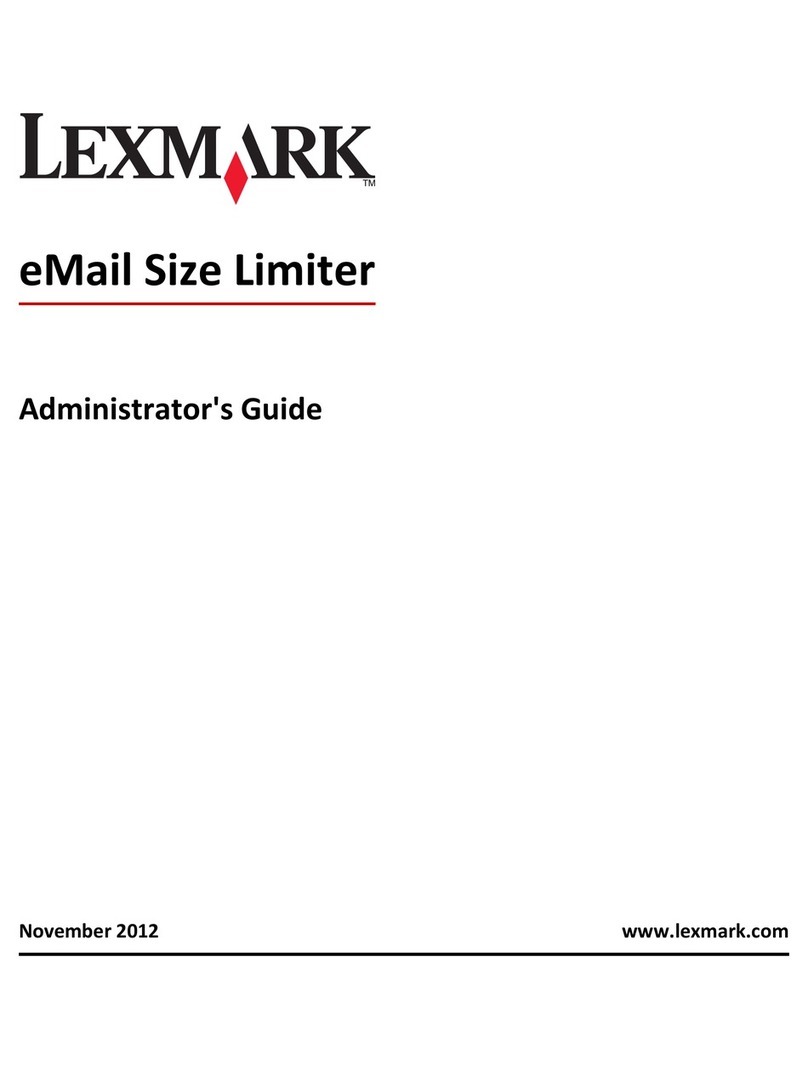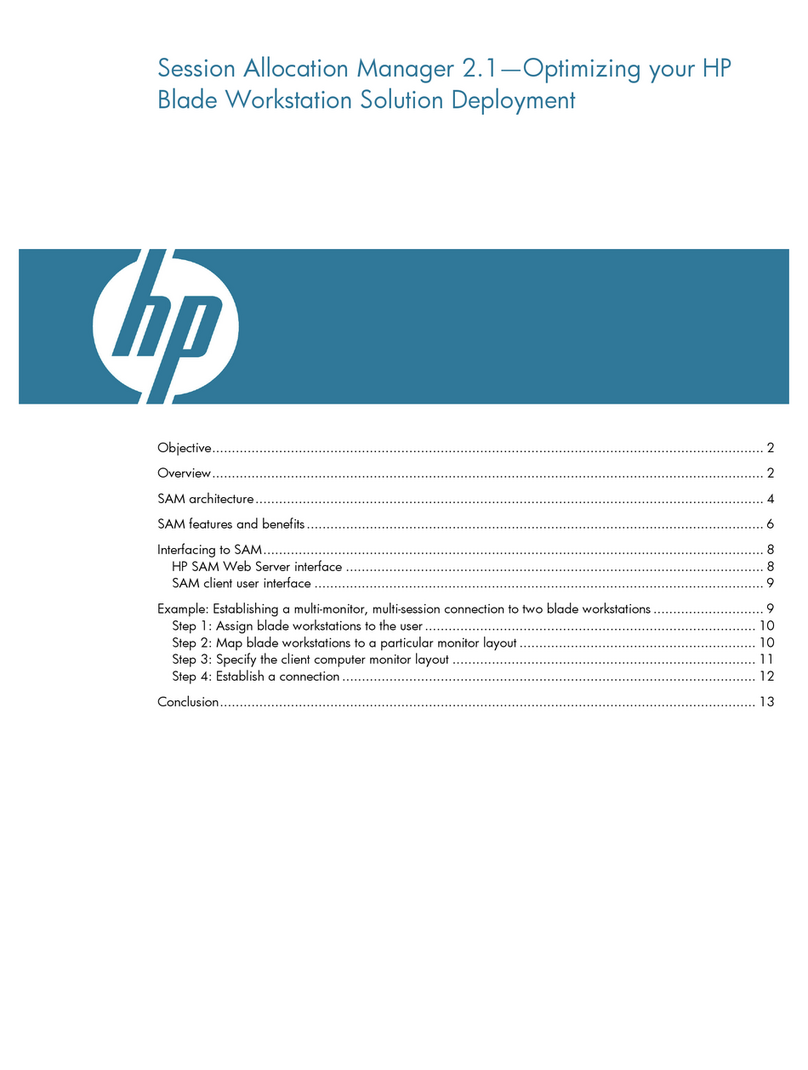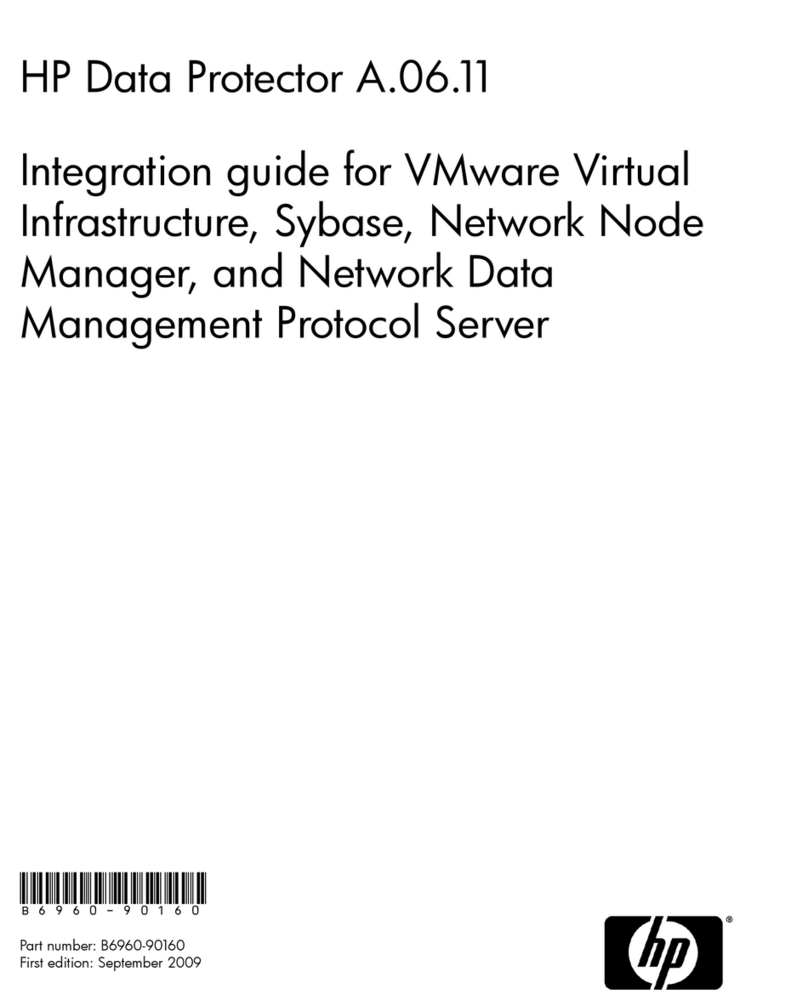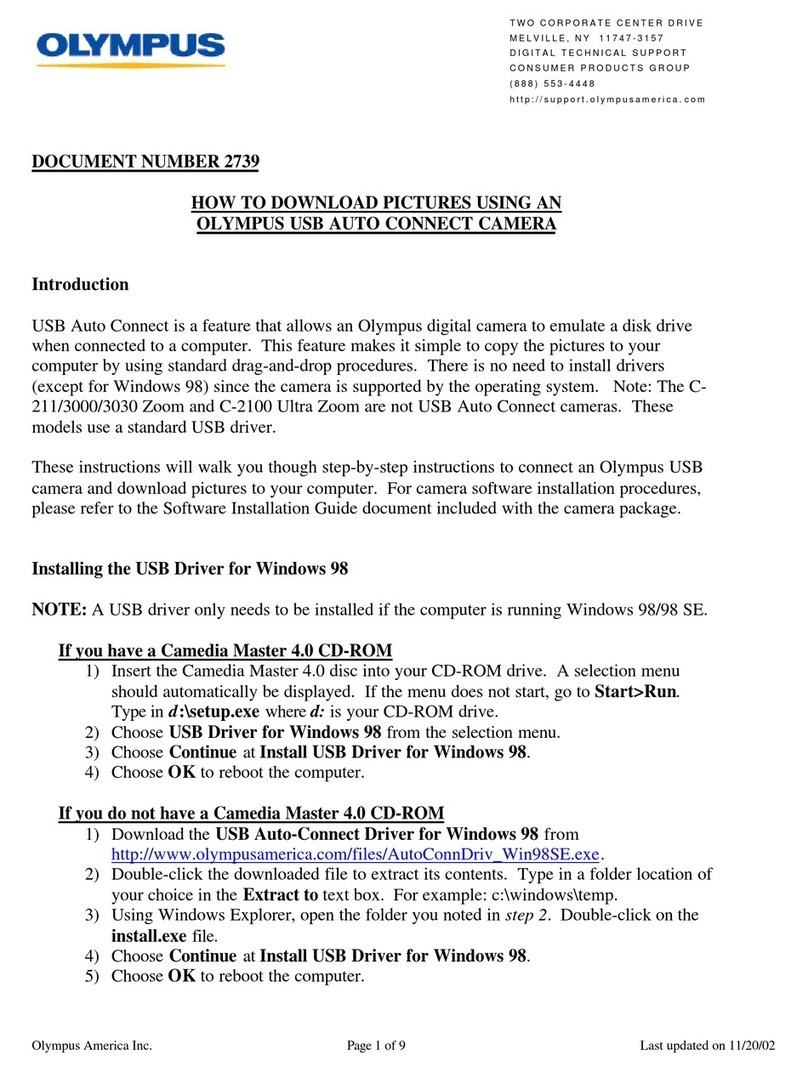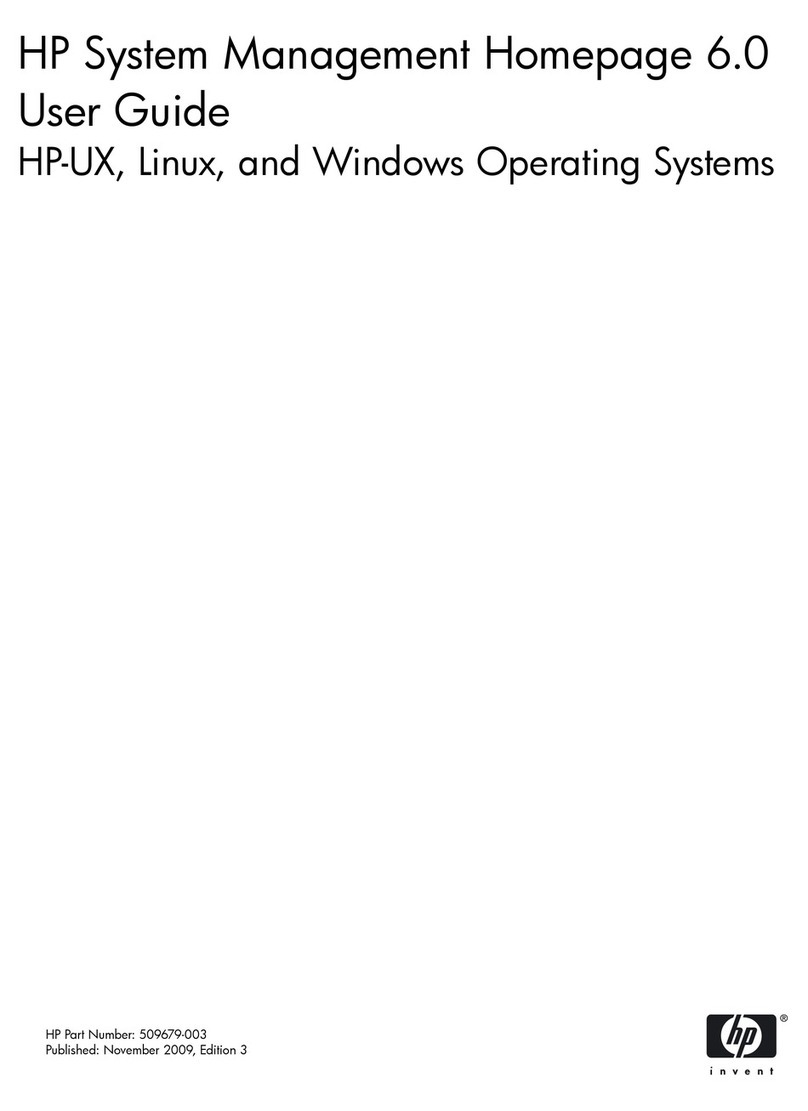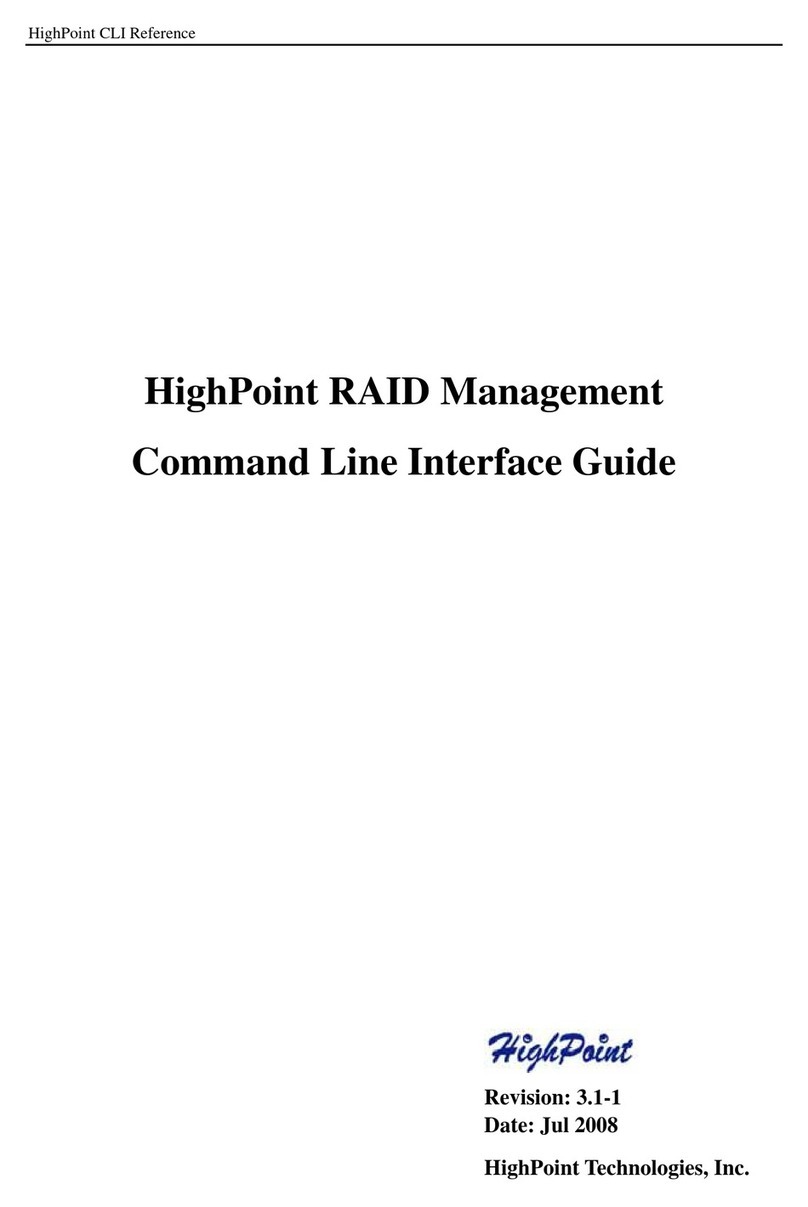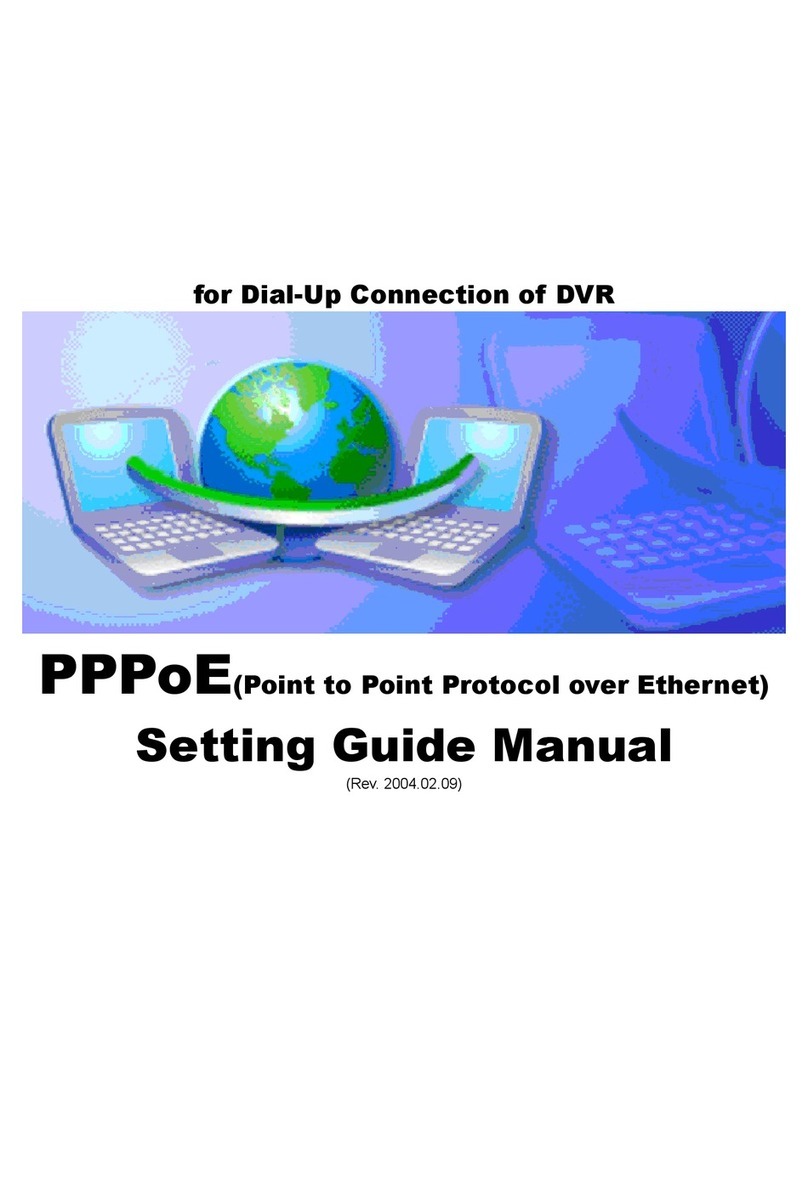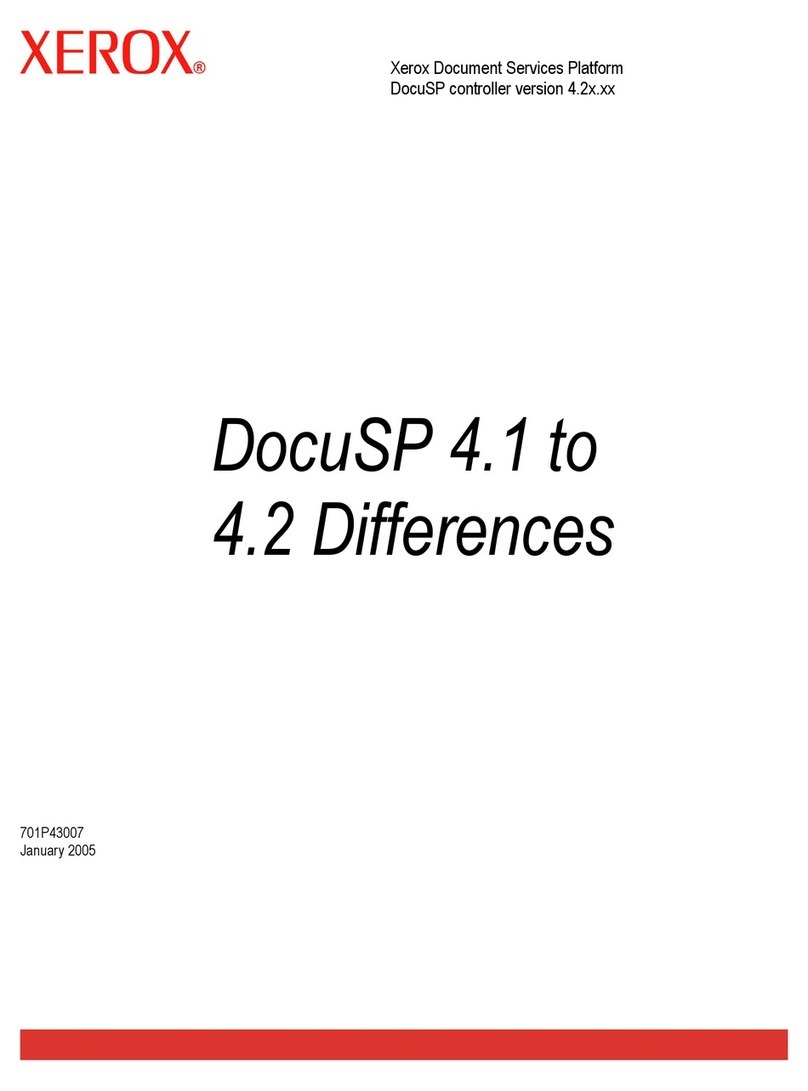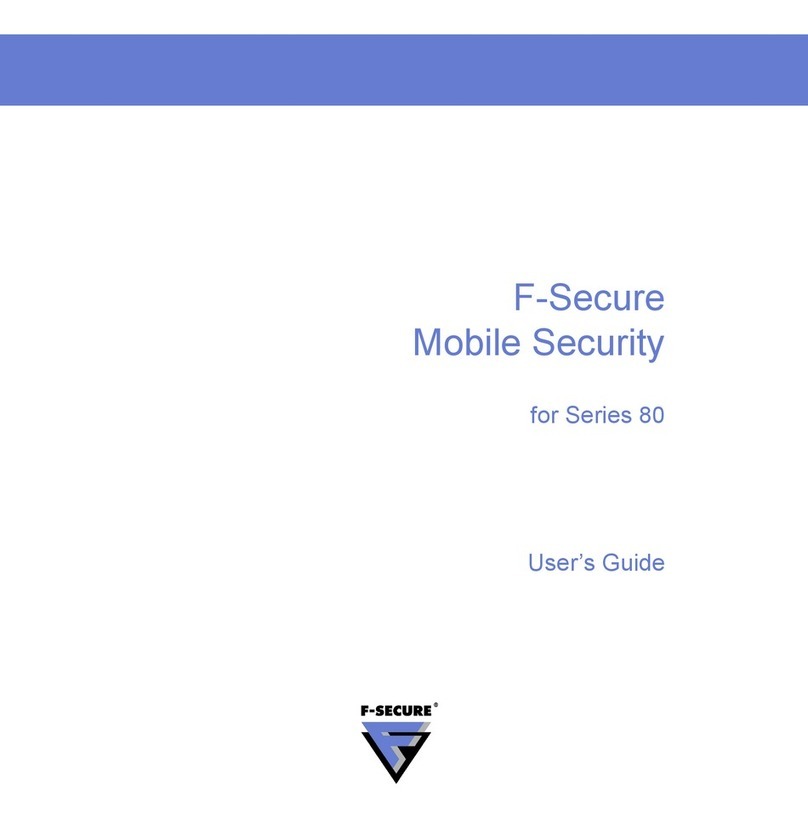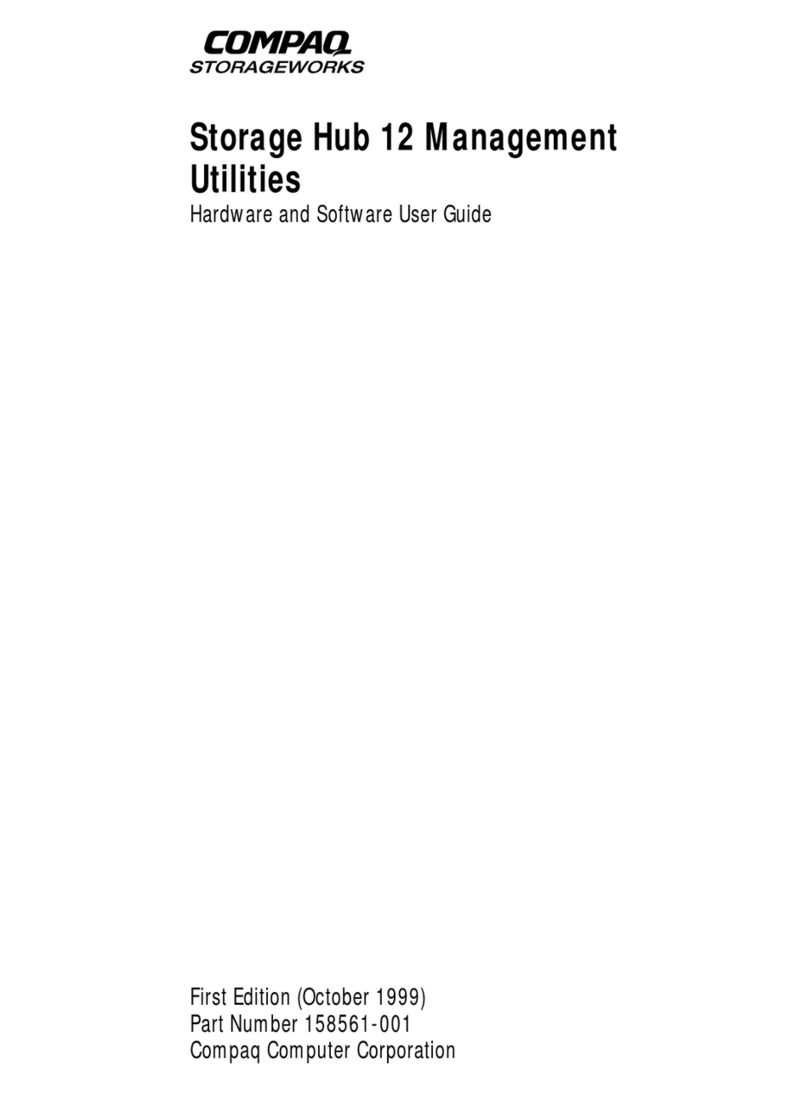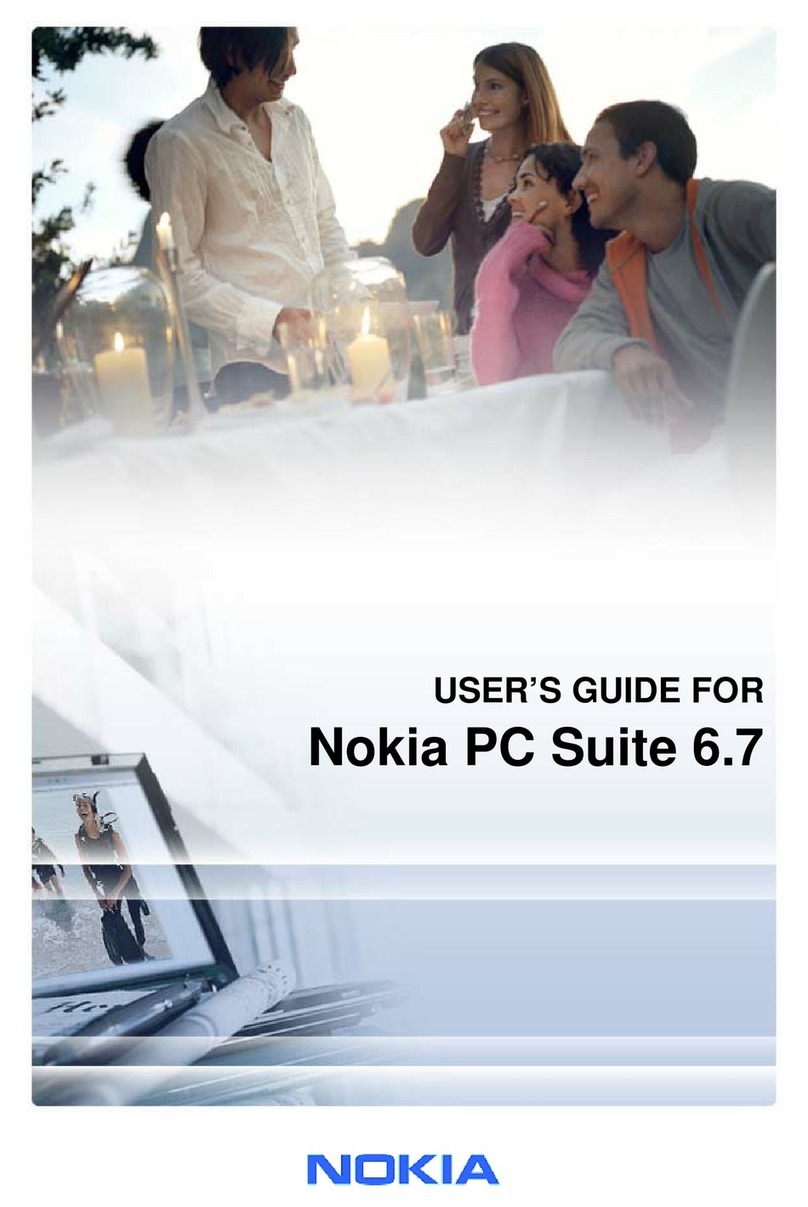13
4.1.3 ThreatSense engine parameters setup
ThreatSense is the name of the technology consisting of
complex threat detection methods. This technology is
proactive, which means it also provides protection
during the early hours of the spread of a new threat. It
uses a combination of several methods (code analysis,
code emulation, generic signatures, virus signatures)
which work in concert to significantly enhance system
security. The scanning engine is capable of controlling
several data streams simultaneously, maximizing the
efficiency and detection rate. ThreatSense technology
also successfully eliminates rootkits.
The ThreatSense technology setup options allow you to
specify several scan parameters:
File types and extensions that are to be scanned
The combination of various detection methods
Levels of cleaning, etc.
To enter the setup window, click Setup > Antivirus and
antispyware > Advanced Antivirus and Antispyware
protection setup and then click the Setup... button
located in the System Protection, Real-Time
Protection and Computer Scan wildcards, which all
use ThreatSense technology (see below). Different
security scenarios could require different configurations.
With this in mind, ThreatSense is individually
configurable for the following protection modules:
System Protection > Automatic startup file check
Real-Time Protection > Real-time file system protection
Computer Scan > On-demand computer scan
The ThreatSense parameters are specifically optimized
for each module, and their modification can significantly
influence system operation. For example, changing
settings to always scan runtime packers, or enabling
advanced heuristics in the real-time file system
protection module could result in a slower system .
Therefore, we recommend that you leave the default
ThreatSense parameters unchanged for all modules
except Computer scan.
4.1.3.1 Objects
The Objects section allows you to define which
computer files will be scanned for infiltrations.
Files – provides scanning of all common file types
(programs, pictures, audio, video files, database files,
etc.).
Symbolic links - (On-demand scanner only) scans
special type of files that contain a text string that is
interpreted and followed by the operating system as a
path to another file or directory.
Email files – (not available in Real-time protection)
scans special files where email messages are contained.
Mailboxes - (not available in Real-time protection) scans
user mailboxes in the system. Incorrect use of this
option may result in a conflict with your email client. To
learn more about advantages and disadvantages of this
option, read this knowledgebase article.
Archives – (not available in Real-time protection)
provides scanning of files compressed in archives (.rar, .
zip, .arj, .tar, etc.).
Self-extracting archives – (not available in Real-time
protection) scans files which are contained in self-
extracting archive files.
Runtime packers – unlike standard archive types,
runtime packers decompress in memory, in addition to
standard static packers (UPX, yoda, ASPack, FGS, etc.).
4.1.3.2 Options
In the Options section, you can select the methods used
during a scan of the system for infiltrations. The
following options are available:
Virus signature database – Signatures can exactly and
reliably detect and identify infiltrations by name using
the virus signature database.
Heuristics – Heuristics use an algorithm that analyzes
the (malicious) activity of programs. The main advantage
of heuristic detection is the ability to detect new
malicious software which did not previously exist, or was
not included in the list of known viruses (virus signatures
database).
Advanced heuristics – Advanced heuristics comprise a
unique heuristic algorithm, developed by ESET,
optimized for detecting computer worms and trojan
horses written in high-level programming languages.
The program's detection ability is significantly higher as
a result of advanced heuristics.
Adware/Spyware/Riskware – This category includes
software that collects sensitive information about users
without their informed consent. This category also
includes software which displays advertising material.
Potentially unwanted applications – Potentially
unwanted applications are not necessarily intended to
be malicious, but may affect the performance of your
computer in a negative way. Such applications usually
require consent for installation. If they are present on
your computer, your system behaves differently
(compared to the way it behaved before these
applications were installed). The most significant
changes include unwanted pop-up windows, activation
and running of hidden processes, increased usage of
system resources, changes in search results, and
applications communicating with remote servers.
Potentially unsafe applications – Potentially unsafe
applications refer to commercial, legitimate software.
The classification includes programs such as remote
access tools, which is why this option is disabled by
default.




















